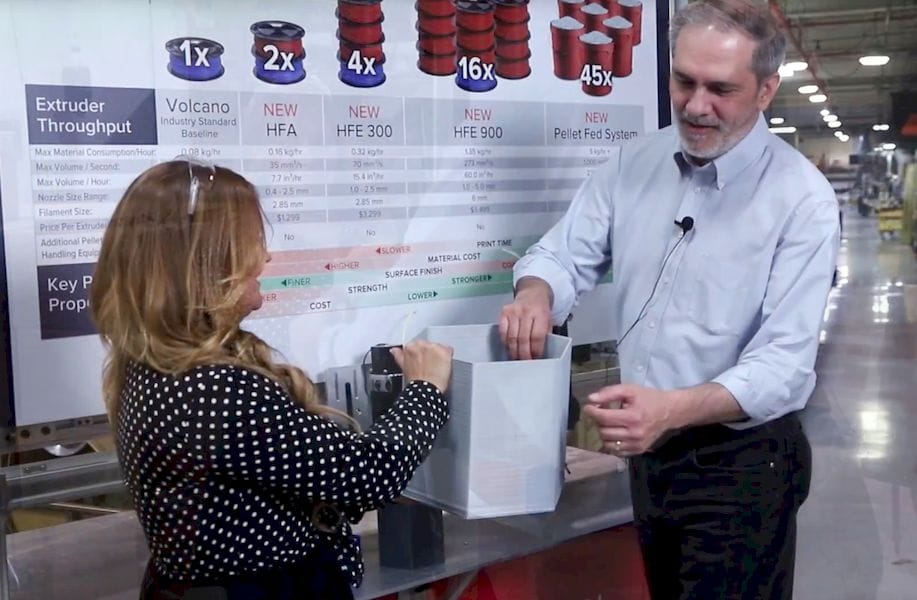
One of the curses of 3D printing is extremely long print durations.
While small items can often be 3D printed in less than an hour, anything substantial takes far longer, and in some cases can take many hours or even days. Those using very large format devices can even find print times measured in weeks.
This is quite frustrating as many other making processes can take only moments to complete their task. A long laser cut, for example, might take only an hour to complete on a reasonable machine.
There are really no good solutions for print speed; the process of printing cannot be made dramatically faster to the point where “anything” can be produced in less than an hour. That must wait for a scientific breakthrough for a fundamentally new process.
But in the meantime there are some things that can be done on filament-based 3D printers.
Increase Motion System Speed: This would seem to be the obvious approach, as the filament process involves literally moving a nozzle across every bit of the printed object’s volume, layer by layer. However, making the nozzle move faster comes with some challenges. If moving too fast, the motors cannot overcome momentum when the nozzle direction abruptly changes. Thus you may have “overshoots” where quality is compromised.
Some have developed better motion systems and even high powered controller boards to handle the requirements of more rapid motion control in real time.
But this turns out to be a rather complex method of speeding up 3D printing operations.
Increase Nozzle Size: This approach is very straightforward and is used by many 3D printer companies. If you want to print more material, simply widen the nozzle size to permit more material to flow per second.
While the standard nozzle size is 0.4mm on most machines, some companies producing larger build volume machines have developed easily swappable nozzles. Typical larger sizes are 0.5, 0.6, 0.8, 1.0mm nozzle sizes. A 1.0mm nozzle permits 6.25X as much material to flow, theoretically decreasing print time by up to 6.25X.
However, the minimum bead size extruded by the larger sized nozzles are clearly larger, meaning the resulting 3D printed objects will have far poorer surface quality. But in some cases that doesn’t matter, and particularly on larger sized prints, where the coarse layering seems to visually disappear into the huge part.
Increase Flow Rate: This is another complex matter, where a careful balance of flow and heat must take place. Imagine a flow of water, and you’re trying to heat it as it passes by. If you expose the water to a heat source, it will be exposed for less time if you move the water faster.
That’s the problem increased flow rate incurs. The solution that some companies have pursued is to lengthen the zone of heat, so that a more rapidly moving thermoplastic filament will still be exposed to the heat for a sufficient time to soften it. These are often easily recognizable as they are visibly taller to accommodate that longer heat zone.
Some companies have also found filament itself as a format is less effective at higher flow rates, and instead have resorted to using the less expensive pellets as material. But this requires a large hopper and sophisticated screw mechanism to drive the pellets into the hot zone in a reliable manner.
All of these solutions come with compromises, which in some cases may be print quality or even total cost.
Recently I found a very good video produced by 3D Platform that illustrates these very characteristics, featuring our friend Mark Huebner of 3D Platform. This company produces some very large volume 3D printers (up to 1.5m on a side!) and so print duration is a prime concern for them.
Their equipment uses a swappable extruder concept, so you are able to see how all of these speed-up ideas work, and the resulting increased size of a given print in a fixed time period.
While the video shows how these effects work on their equipment, the principles are the same for any filament-based 3D printer.
Via 3D Platform

